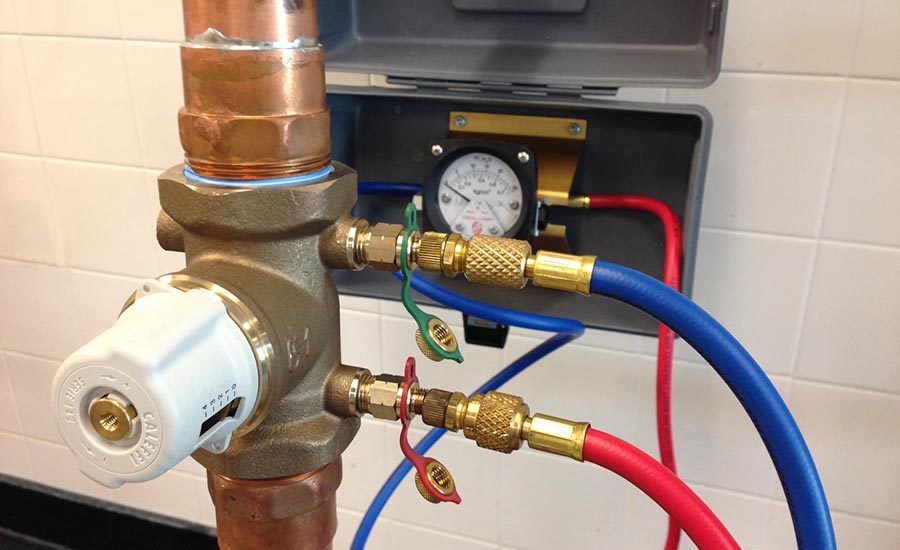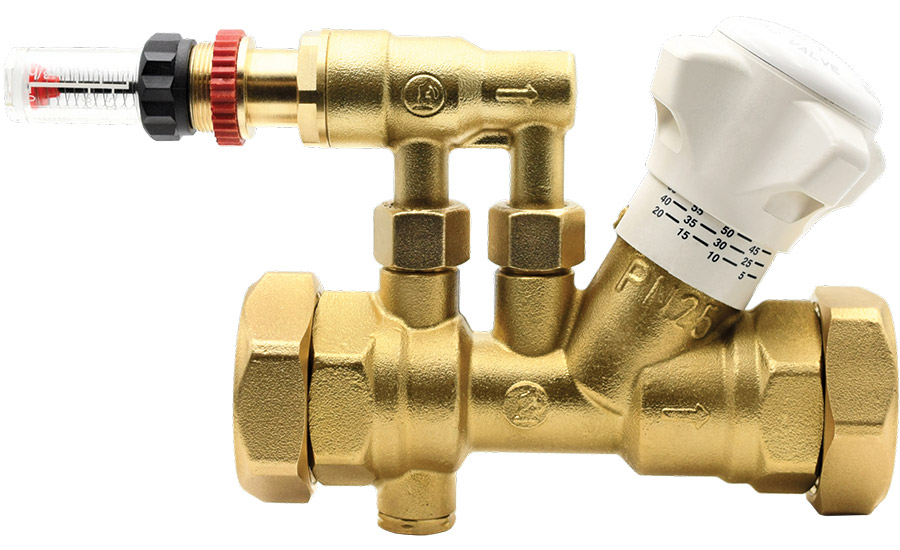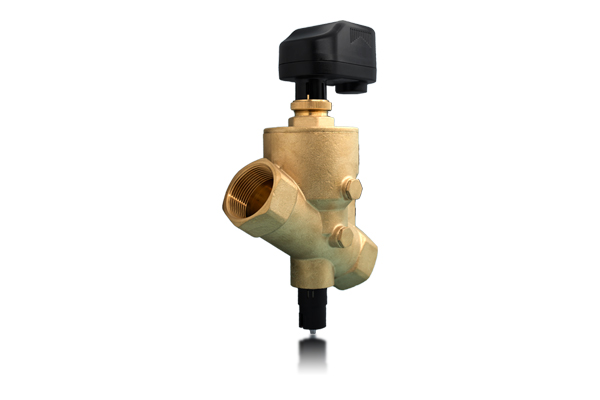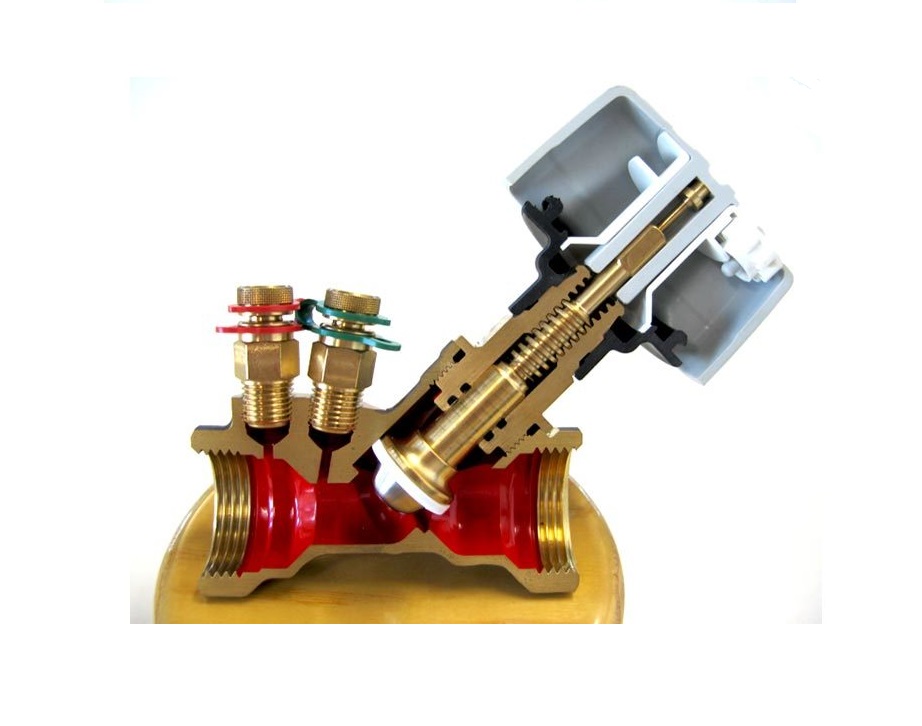What is Balancing Valve? Heating and cooling systems are balanced to ensure that the right amount of water is available at all points of use. Balancing is accomplished by incorporating balancing valves into the system, which add adjustable resistance to the system. The balancing valve, a regulatory device used to equalize the pressure between the intake and the outflow, will be the subject of this essay. This article seeks to assist designers in selecting the correct balancing valves for their applications by looking at their shape, function, and specifications.
There is a considerable amount of information available on Linquip’s website that may prove valuable to you as a prospective customer in learning more about balancing valves before you make a purchase decision. You will then be able to choose the product which is most suitable for your needs. If you need information about valves or the equipment they are fitted with, regarding services or products, Linquip is the best point of contact to choose. The Linquip team of experts is available to answer any questions you may have about these pieces of equipment. It is highly recommended that you read Linquip’s article titled “What is Industrial Valves? Working Principles & Application” since it contains useful information for you.
By registering for a Linquip Expert account, you can fully utilize the Linquip platform to the fullest extent possible. Registering with Linquip gives you the opportunity to showcase your expertise in industrial equipment to potential clients on the basis that is tailored to their specific requirements. You may be interested in writing a guest post for the Linquip website. It is possible to add your own content directly to the Linquip platform. This can be done through the Guest Posting feature.
⇒ View a List of Valves for Sale and Their Suppliers ⇐
What Is Balancing Valve?
Balancing valves are unique regulators that guarantee hydraulic balance, or that the proper flow rate is maintained to keep the system within operating parameters. The valves nearest to the pump system are set to give more resistance than valves further away from the pump system. This offsets the higher pressure loss in the longer pipe portions. It is considered to be balanced when the varied flow rates in the system have the intended relationship.

The pressure losses throughout the balancing valves should be kept as low as feasible, with the furthest distant valve’s pressure loss being near zero. This will help to reduce wasteful pump power use during the system’s lifespan.
These valves “balance” the flow rate via the valve by restricting output pressure, especially from one location with variable pressure to another. This function may appear uninteresting, but it is an important tool for designers since it prevents pressure and temperature difficulties while also ensuring optimal efficiency.
This implies that balancing valves are required for every application, including heat exchangers, power plants, and other applications. They are available in a variety of sizes, ratings, and levels of complexity as static or dynamic balancing valves (more on this later). They are used in heating/cooling, power generating, plumbing, and a variety of other hydraulic applications that need consistent pressure and mass flow, as previously indicated. For more information about them, click on this video.
Balancing Valves Working Principles
Because there are so many ways to regulate flow through a system, it’s difficult to explain how each balancing valve works while keeping this page concise; nonetheless, all balancing valves use some sort of regulation to generate a consistent output from a variable input.
Even if turbulence or pressure losses cause a system’s flow rate to fluctuate dramatically, following a balancing valve, the flow rate will remain consistent and predictable. They’re similar to resistors in an electrical circuit, which limit the flow of electricity to ensure that the proper voltage reaches the output. This section will go over how balancing valves function and how they employ mechanical qualities to maintain regular flow rates.
Types of Balancing Valves
Static and dynamic balancing valves are the two types offered.
Static Balancing Valves
Static balancing valves, which are incorporated into the system, act as permanent resistance. Because altering only one of these valves in the system might affect the flow through the other valves, the settings for these valves must be calculated and altered precisely.

One of the simplest ways to regulate flow via a line is to use static balancing valves, also known as manual valves, two-position regulators, venturi-type valves, and/or digital locking balancing valves. They use an obturator (also known as a spool) to enlarge or reduce the size of the intake entry as it is rotated. The valve regulates the quantity of flow that exits the valve mechanically, enabling designers to restrict flow.
Two access points (left two ports) help the designer to assess pressure before and after the valve and act as checkpoints for manual or automatic flow regulator systems.
Dynamic Balancing Valves
Flow limiters are provided via dynamic balancing valves. They are regulated to the desired flow rate and prevent a higher flow rate from occurring. If the pressure in front of the valve rises, the valve will close, even more, increasing the pressure loss across the valve. This keeps the flow rate in the designated route at the required level.
For a dynamic balancing valve to work correctly, the inlet pressure must be greater than a particular threshold. This means that, unlike static valves, the resistance at the furthest valve cannot be close to zero.

Because there are so many methods to actively adjust the flow, dynamic balancing valves exist in a variety of shapes and sizes. Self-operated flow control valves, constant flow valves, automated balancing valves, differential control valves, and other types of valves are available. The dynamic balancing valve accomplishes pressure balance by adjusting the flow’s drag coefficient or modifying the valve opening using differential pressure.
To keep the pressure consistent, they use cartridges, electrical devices, and/or other channels. These valves frequently have indicators that display the continuous pressure across the valve, allowing any changes to be corrected by changing the valve’s flow rate and/or operating settings. They often have a functioning range of pressures and flow rates that must be maintained or damage and/or error will occur. When a system is suffering severe temperature/pressure disparities, or when numerous uneven sources must converge into a bigger source, the dynamic balancing valve is the ideal option.
Balancing Valves Selection
A variety of firms produce balancing valves. Some of them offer electronic flow monitoring technology to monitor the flow via their valves. This is accomplished by monitoring the pressure drop across the valve and computing the flow based on the kv-value of the valve’s current position.
Specifying the correct balancing valve initially requires defining the limits of the application at hand (pressure ranges, mass flow rates, fluid type, etc.). This section will go through these characteristics in depth so you may begin looking for a balancing valve that meets your requirements. This section is intended to offer generic requirements; however, depending on the valve type and manufacturer, more standards may exist.
Linquip Manufacturers supply circulator pumps for heating and cooling systems and assist the system contractor with balance which is often done during commissioning. The work is frequently documented in a report that includes the flow rates that were measured. Discuss your ideas with your supplier to determine the best in-stock alternative, and present these requirements to them to give them a sense of what will work best.
Rated & Pressure Range
Understand the pressure range in your system and which of these pressures the valve will encounter. Determine how the flow rate will change before installing the valve so that any flow-related concerns be avoided. These figures can help you figure out what valve grade you’ll need and rule out any designs that aren’t acceptable. Also, consider if the pressure range will be large or small since this will decide whether a static or dynamic balancing valve is better suited to the application.
Pipe size
What is the pipe diameter that will be attached to the balancing valve? This is a critical measurement since pipe diameter affects flow rate, pressure, and a variety of other operating characteristics. When defining your valves, keep in mind that some balancing valves can only be utilized with a certain range of pipe diameters.
Type of valve
Which type of balance is the most appropriate for your project? Explore a simple static balancing valve for basic resistance; if active control is necessary, consider differential balance valves and/or alternative dynamic designs. Both types of balancing valves are frequently used in combination to provide steady flow through a system, so break down each portion of the system and figure out what form of balancing is required at each phase.
Noise, Material Choosing, and Safety Considerations
Valves do not operate in silence. When water is throttled, limited, or controlled, the valve usually produces more noise. Look for the specified decibels of noise while utilizing particularly high or heavy flow rates. Material selection is also vital, as you want a valve that won’t react chemically with your fluid or create excessive depositing. Choose wisely since the correct material will keep its strong qualities over time and increase the project’s usable life.
Finally, think about any safety features you’d like to incorporate. Automatic shutoffs, warning indications, and/or any other feature that prevents the excessive time and efficiency loss are examples.
Control Systems
Because these valves are designed to manage flow, they come equipped with instrumentation and measuring equipment to assure correct operation. Determine if control equipment such as dials, magnetic indicators, and/or other measuring devices are required for the project.
Memory components can help guarantee that a valve does not deviate from a defined point over time although they are frequently required to be specified before purchase. Consider a valve with testing ports if your system will undergo quality assurance testing (as it should in most complicated systems to preserve efficiency) (most should come stock with these, but not always).
Applications of Balancing Valves
Balancing valves, as previously stated, are employed to keep the operating parameters of a hydraulic system consistent. This section will look at some popular balancing valve applications to see where they’ve worked well in the past. This list is far from complete, but it should give you a good notion of where the balancing valve excels as a regulating device. Balancing valves are used in a variety of ways, including:
- Refrigeration Applications
- Heat Exchangers
- HVAC Applications
- Power Generation Systems
- Plumbing Systems
What Is the Best Place To Put a Balancing Valve?
The majority of experts agree that flow balancing valves should be located on the coil’s return side whenever possible. By doing so, air and noise problems associated with the coil can be reduced.
What Is the Proper Way To Check a Balancing Valve?
Press the test button on the manometer to check the pressure. The instrument will display the pressure drop across the balancing valve. Next, read the number indicated on the handle of the balancing valve.
Download What is Balancing Valve? PDF
This article can be downloaded as a PDF file by clicking on the link below.
Summary
The purpose of this essay was to explain what balancing valves are and how they operate. Consult our other guides for additional information on similar items, or contact Linquip Experts to find possible suppliers or examine product specifications.
Buy Equipment or Ask for a Service
By using Linquip RFQ Service, you can expect to receive quotations from various suppliers across multiple industries and regions.
Click Here to Request a Quotation From Suppliers and Service Providers
Read More on Linquip
- What is Air Valve? Working Principles & Types (Clear Guide)
- What is Solenoid Valve and How Does It Work? 2022 Guideline
- What is Automatic Expansion Valve: A Basic Guide
- Strainer Valve: a basic guide to know it better
- What Is Actuated Valve? Working Principle & Types
- What Is Linear Valve? With Example, Working Principles & Types
- What is Industrial Valves? Working Principles & Application
- What is Drain Valve? Working Principle, Types & Applications
- What are Coaxial Valves? Working Principles and Type
- What is Isolation Valve? Working Principle & Types
- What is Block Valve? Working Principle & Types




Thank you for these useful information.
Thanks for visiting our website and leaving your comment, chemgi! We hope to hear from you again in our other posts.